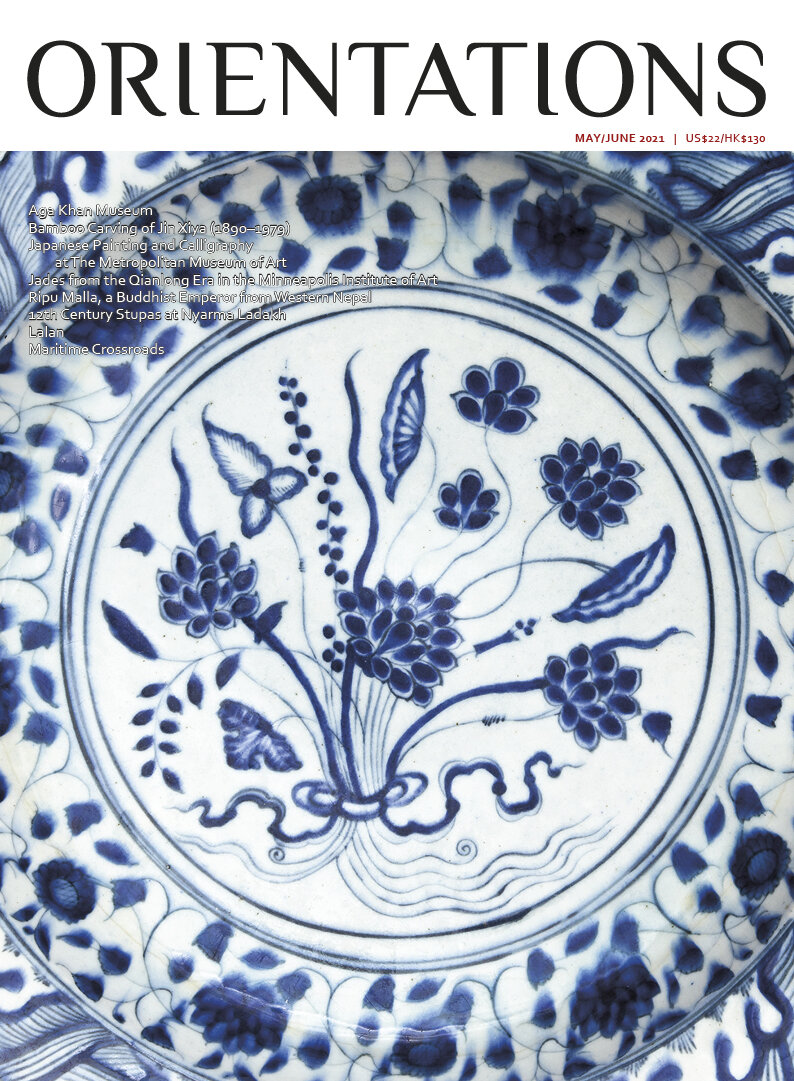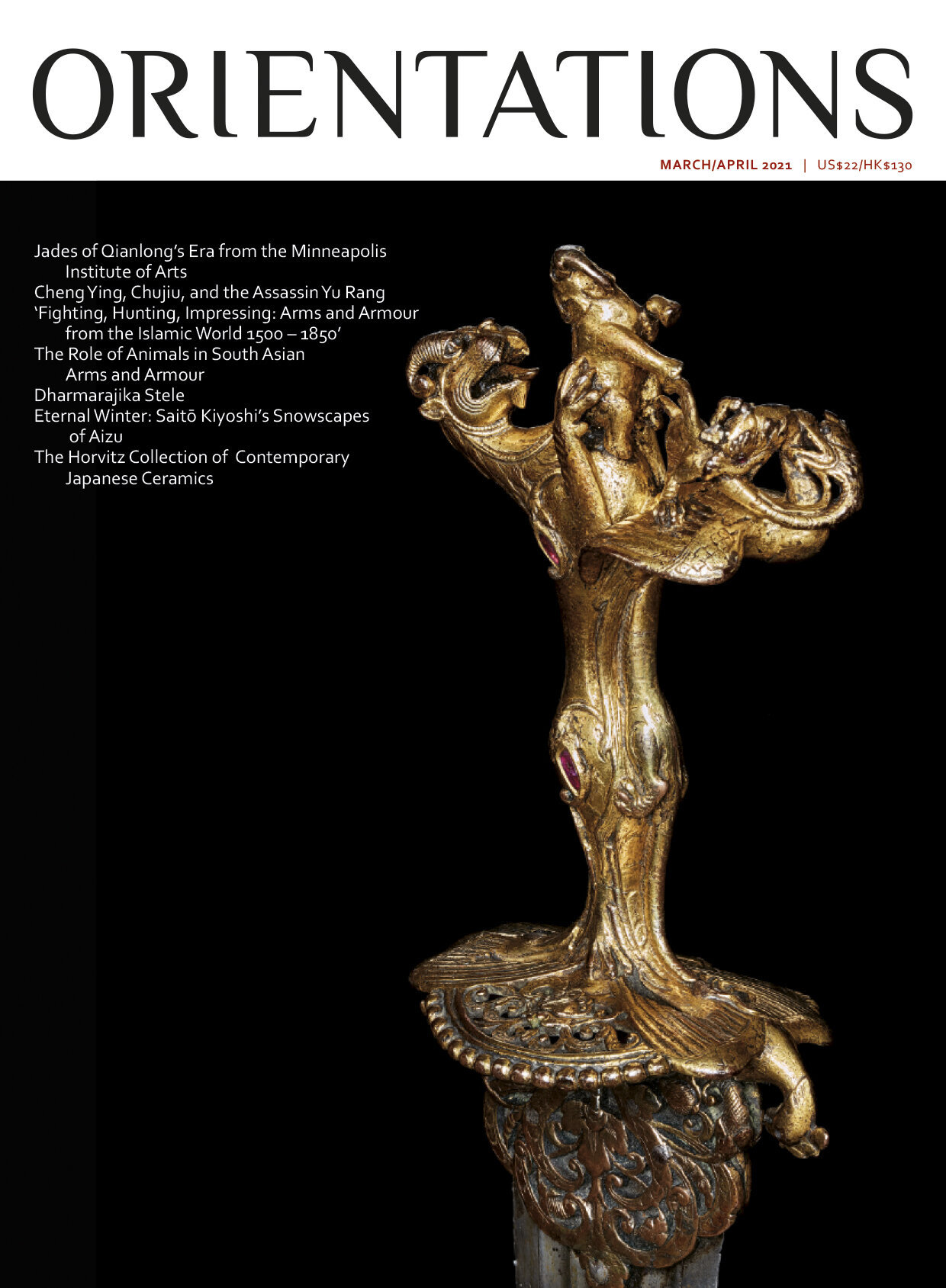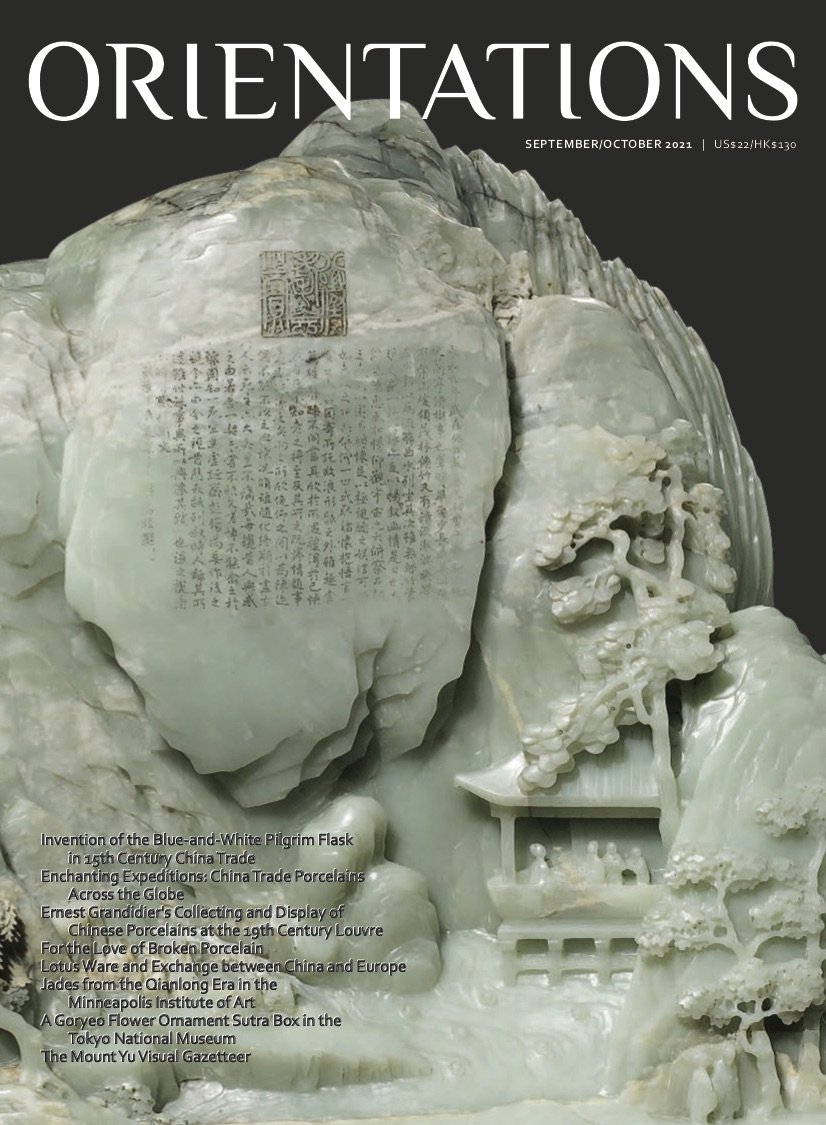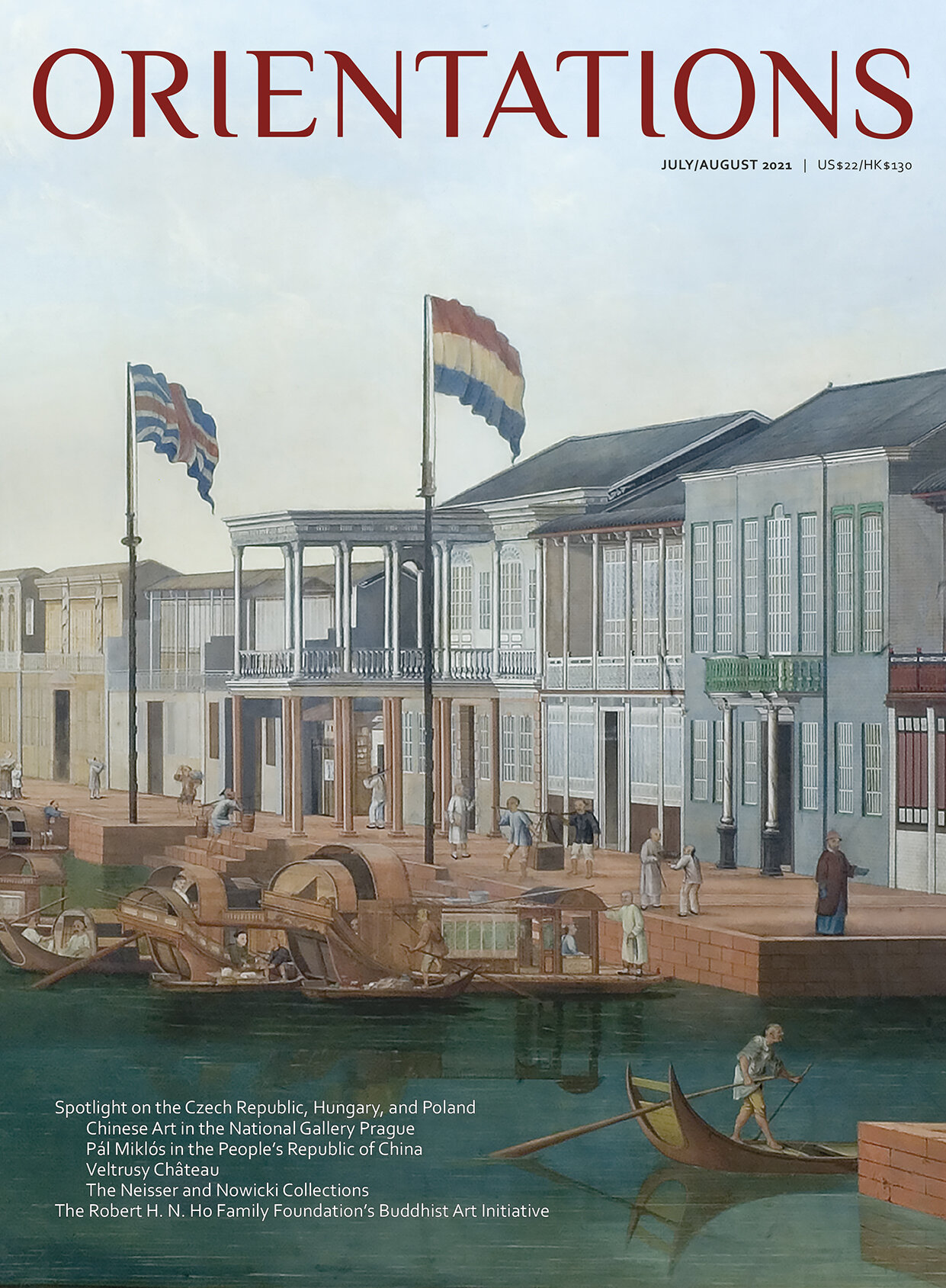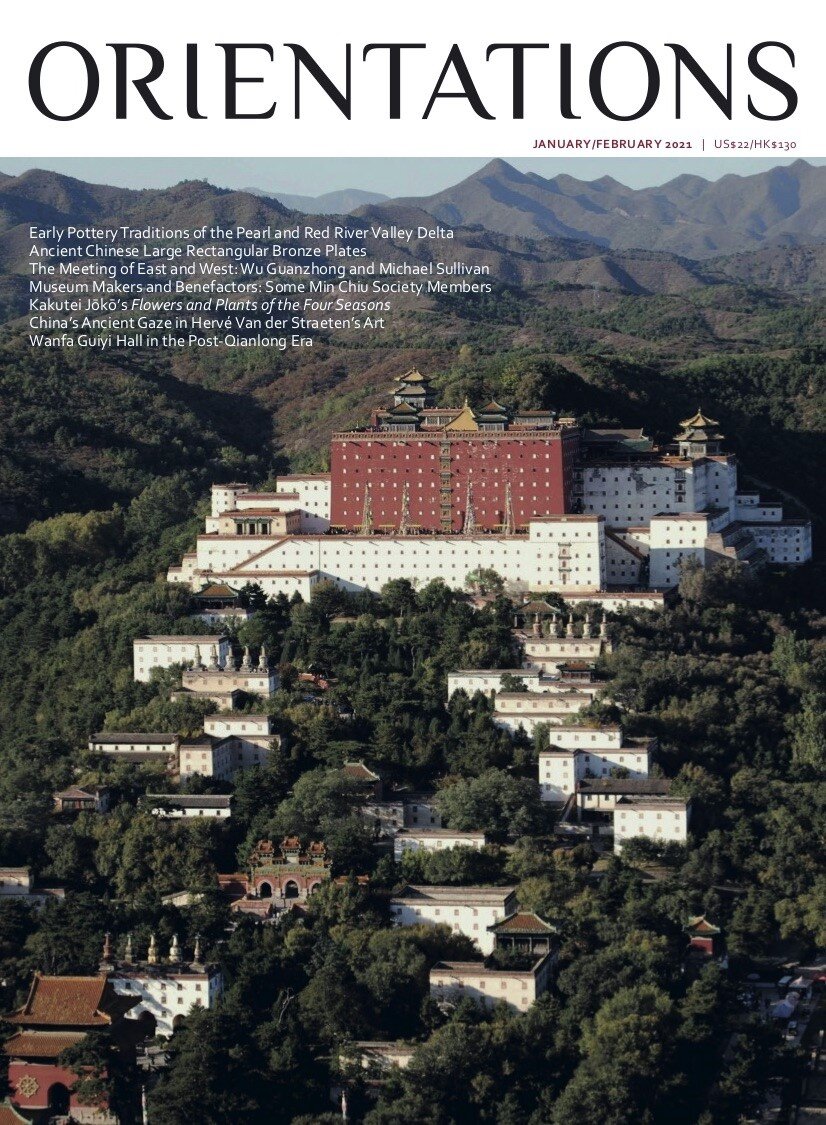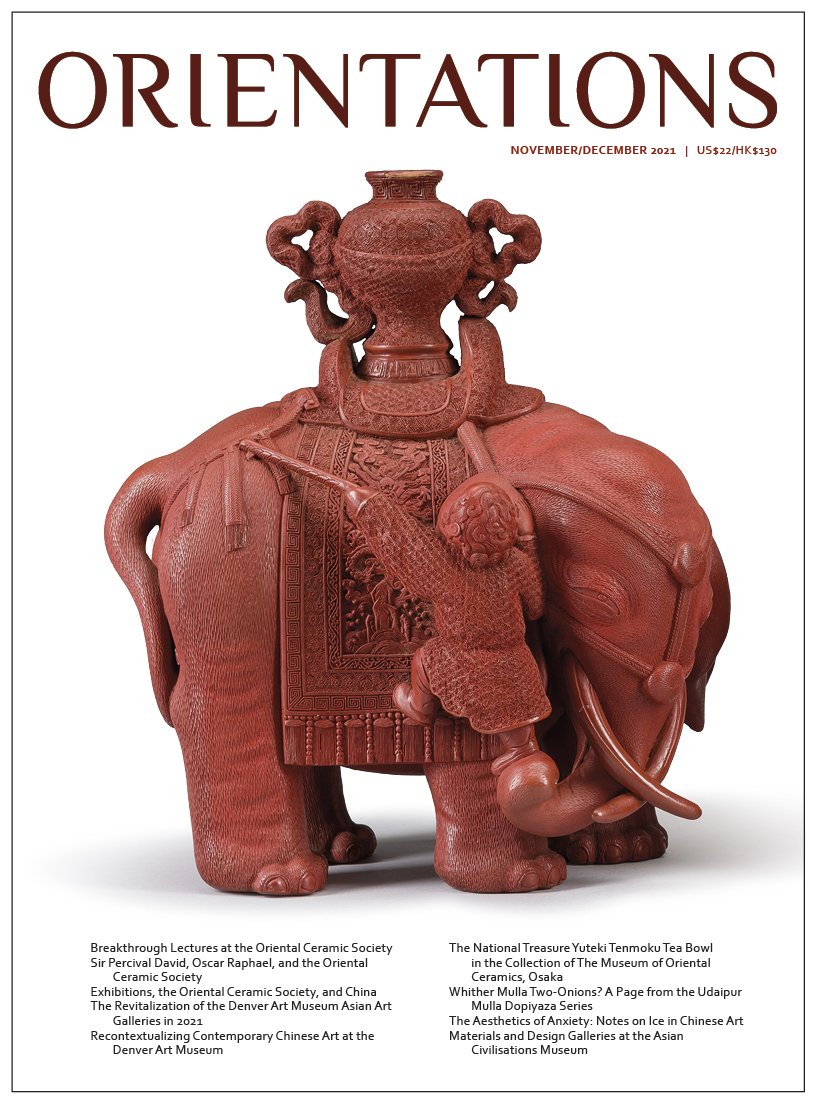 Image 1 of 1
Image 1 of 1


NOV/DEC 2021
VOLUME 52 - NUMBER 6
On the 31st of January 1921, a group of twelve connoisseurs including George Eumorfopoulos, a renowned collector of Chinese, Korean, and Near Eastern art, gathered in the home of another esteemed collector, S. D. Winkworth, to form the Oriental Ceramic Society (OCS). The purpose was to allow like-minded individuals to discuss and exchange ideas about Asian art. Over the next decade, members would take turns to host meetings in their homes and to bring their collections for examination and discussion. Keen to share their findings, the founding members launched the first issue of The Transactions of the Oriental Ceramic Society in 1923, and also opened membership from a closed group of friends to anyone interested in Asian art in 1933. The OCS marks its centenary this year with the exhibition ‘Collectors, Curators, Connoisseurs: A Century of The Oriental Ceramic Society’ in the Brunei Gallery at the School of Oriental and African Studies (SOAS), from 15 October to 11 December. In this issue, we look at contributions to the understanding of Asian art, in particular, to Chinese ceramics as well as key personalities in the history of the OCS and significant past exhibitions.
The Asian art collection in the Denver Art Museum began in 1915 when Walter C. Mead pledged his collection of Chinese and Japanese art to the people of Denver; since then, it has grown with other donations and acquisitions. The Asian art galleries, closed in 2018 as part of a revitalization program, reopened this October with a completely new design. Given the opportunity to start afresh, curators used new approaches to present their collections in keeping with the times and changing audience demands. Additionally, over the last two decades many of the donations and acquisitions have been of Chinese contemporary art. Placing the museum’s department of modern and contemporary art in charge of these pieces rather than the Asian art department has resulted in a decontextualization of Chinese contemporary art from China but a recontextualization in a global setting.
The Asian Civilisations Museum in Singapore is another museum that has recently undergone extensive renovations; its collection is now organized along three curatorial themes: maritime trade, faith and belief, and materials and design. We focus on the materials and design galleries and how they make historical connections between cultures and civilizations in Asia and between Asia and the world.
Japan holds many treasures of Chinese art, the most famous works being those in the Shōsōin repository of the Tōdaiji Temple in Nara. Also, eight of the fourteen ceramic works designated as National Treasures of Japan are from China, of which five are Southern Song dynasty (1127–1279) tenmoku tea bowls. Of these, one, a yuteki tenmoku or ‘oil-spotted tenmoku tea bowl’, is in the collection of The Museum of Oriental Ceramics, Osaka. We discuss the significance these tea bowls hold in the culture and history of Japan.
We pay tribute to Karen Beagle (1960–2021) whose joie de vivre and parties in her own little Eden on the island of Peng Chau in Hong Kong will be sorely missed.
FEATURES
Regina Krahl. On the Forefront of Research: Breakthrough Lectures at the Oriental Ceramic Society
Stacey Pierson. A Collecting Friendship: Sir Percival David, Oscar Raphael, and the Oriental Ceramic Society
Rosemary Scott. Exhibitions, the Oriental Ceramic Society, and China
at the 19th Century Louvre
Tianlong Jiao. Douglas Wagner. Linking Asia with the Mile High City: The Revitalization of the Denver Art Museum Asian Art Galleries in 2021
Tianlong Jiao. Recontextualizing Contemporary Chinese Art at the Denver Art Museum
Kobayashi Hitoshi. Culmination of Beauty: The National Treasure Yuteki Tenmoku Tea Bowl in the Collection of The Museum of Oriental Ceramics, Osaka
Andrew Topsfield. Whither Mulla Two-Onions? A Page from the Udaipur Mulla Dopiyaza Series
Anne N. Feng. The Aesthetics of Anxiety: Notes on Ice in Chinese Art
Naomi Wang, Kan Shuyi, Jackie Yoong, and Conan Cheong. Materials and Design Galleries at the Asian Civilisations Museum
Marco Caboara. ‘The Geographical Complete Map of the Everlasting Unified Qing Empire’ at the Hong Kong University of Science and Technology
INTERVIEWS
An Interview with Robert and Lisa Kessler
TRIBUTES
Karen Beagle (1960–2021)
VOLUME 52 - NUMBER 6
On the 31st of January 1921, a group of twelve connoisseurs including George Eumorfopoulos, a renowned collector of Chinese, Korean, and Near Eastern art, gathered in the home of another esteemed collector, S. D. Winkworth, to form the Oriental Ceramic Society (OCS). The purpose was to allow like-minded individuals to discuss and exchange ideas about Asian art. Over the next decade, members would take turns to host meetings in their homes and to bring their collections for examination and discussion. Keen to share their findings, the founding members launched the first issue of The Transactions of the Oriental Ceramic Society in 1923, and also opened membership from a closed group of friends to anyone interested in Asian art in 1933. The OCS marks its centenary this year with the exhibition ‘Collectors, Curators, Connoisseurs: A Century of The Oriental Ceramic Society’ in the Brunei Gallery at the School of Oriental and African Studies (SOAS), from 15 October to 11 December. In this issue, we look at contributions to the understanding of Asian art, in particular, to Chinese ceramics as well as key personalities in the history of the OCS and significant past exhibitions.
The Asian art collection in the Denver Art Museum began in 1915 when Walter C. Mead pledged his collection of Chinese and Japanese art to the people of Denver; since then, it has grown with other donations and acquisitions. The Asian art galleries, closed in 2018 as part of a revitalization program, reopened this October with a completely new design. Given the opportunity to start afresh, curators used new approaches to present their collections in keeping with the times and changing audience demands. Additionally, over the last two decades many of the donations and acquisitions have been of Chinese contemporary art. Placing the museum’s department of modern and contemporary art in charge of these pieces rather than the Asian art department has resulted in a decontextualization of Chinese contemporary art from China but a recontextualization in a global setting.
The Asian Civilisations Museum in Singapore is another museum that has recently undergone extensive renovations; its collection is now organized along three curatorial themes: maritime trade, faith and belief, and materials and design. We focus on the materials and design galleries and how they make historical connections between cultures and civilizations in Asia and between Asia and the world.
Japan holds many treasures of Chinese art, the most famous works being those in the Shōsōin repository of the Tōdaiji Temple in Nara. Also, eight of the fourteen ceramic works designated as National Treasures of Japan are from China, of which five are Southern Song dynasty (1127–1279) tenmoku tea bowls. Of these, one, a yuteki tenmoku or ‘oil-spotted tenmoku tea bowl’, is in the collection of The Museum of Oriental Ceramics, Osaka. We discuss the significance these tea bowls hold in the culture and history of Japan.
We pay tribute to Karen Beagle (1960–2021) whose joie de vivre and parties in her own little Eden on the island of Peng Chau in Hong Kong will be sorely missed.
FEATURES
Regina Krahl. On the Forefront of Research: Breakthrough Lectures at the Oriental Ceramic Society
Stacey Pierson. A Collecting Friendship: Sir Percival David, Oscar Raphael, and the Oriental Ceramic Society
Rosemary Scott. Exhibitions, the Oriental Ceramic Society, and China
at the 19th Century Louvre
Tianlong Jiao. Douglas Wagner. Linking Asia with the Mile High City: The Revitalization of the Denver Art Museum Asian Art Galleries in 2021
Tianlong Jiao. Recontextualizing Contemporary Chinese Art at the Denver Art Museum
Kobayashi Hitoshi. Culmination of Beauty: The National Treasure Yuteki Tenmoku Tea Bowl in the Collection of The Museum of Oriental Ceramics, Osaka
Andrew Topsfield. Whither Mulla Two-Onions? A Page from the Udaipur Mulla Dopiyaza Series
Anne N. Feng. The Aesthetics of Anxiety: Notes on Ice in Chinese Art
Naomi Wang, Kan Shuyi, Jackie Yoong, and Conan Cheong. Materials and Design Galleries at the Asian Civilisations Museum
Marco Caboara. ‘The Geographical Complete Map of the Everlasting Unified Qing Empire’ at the Hong Kong University of Science and Technology
INTERVIEWS
An Interview with Robert and Lisa Kessler
TRIBUTES
Karen Beagle (1960–2021)

